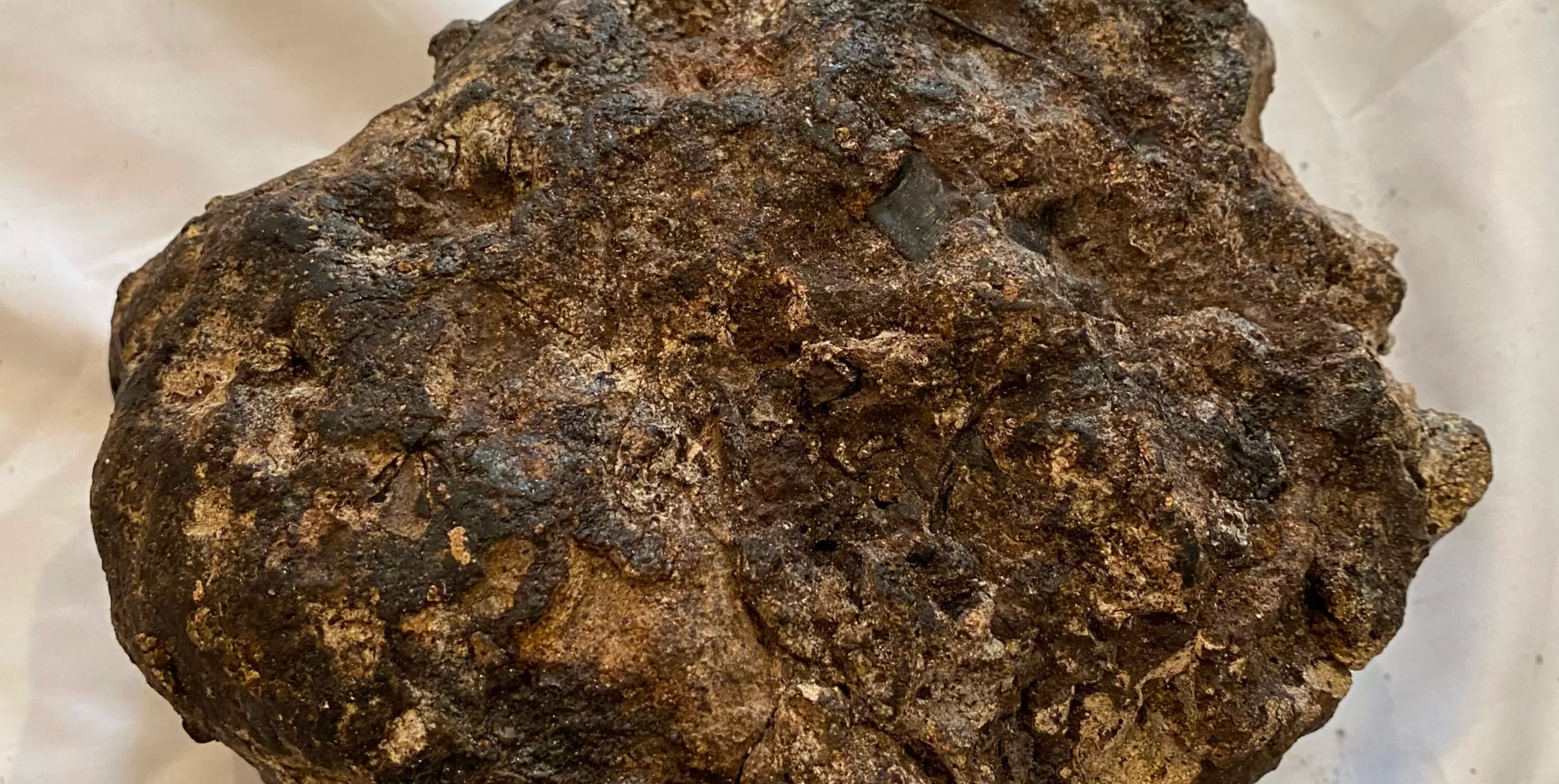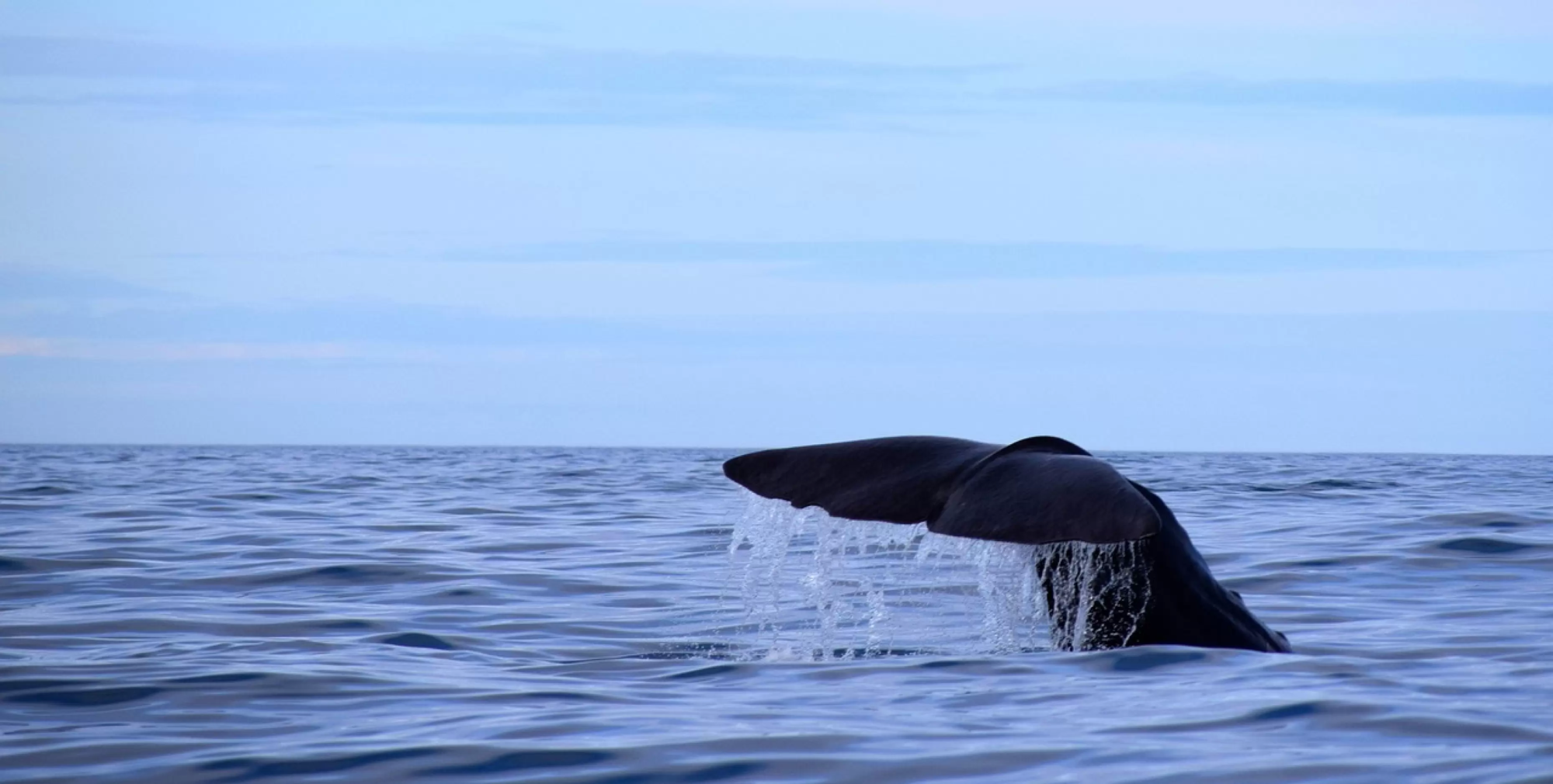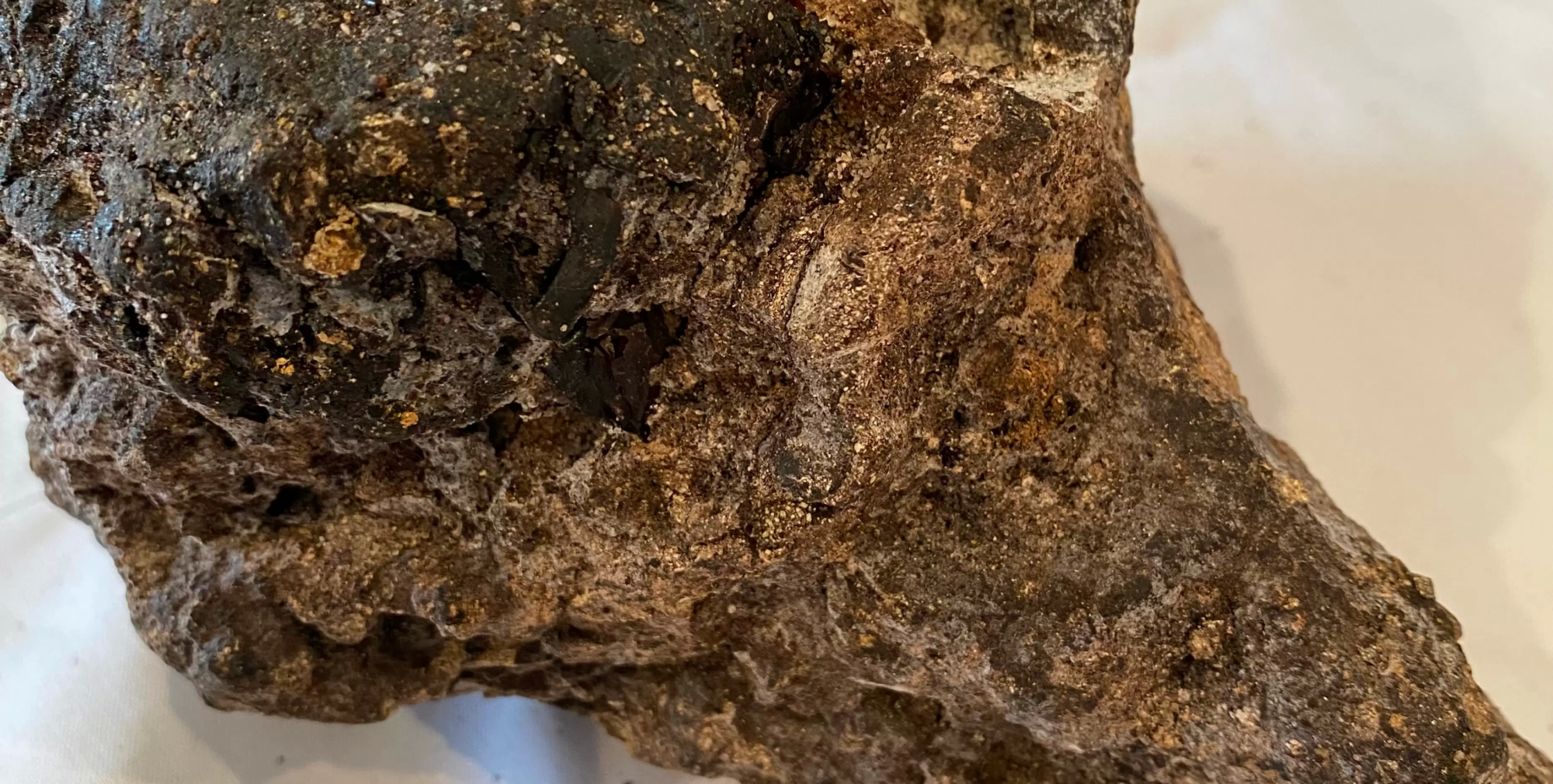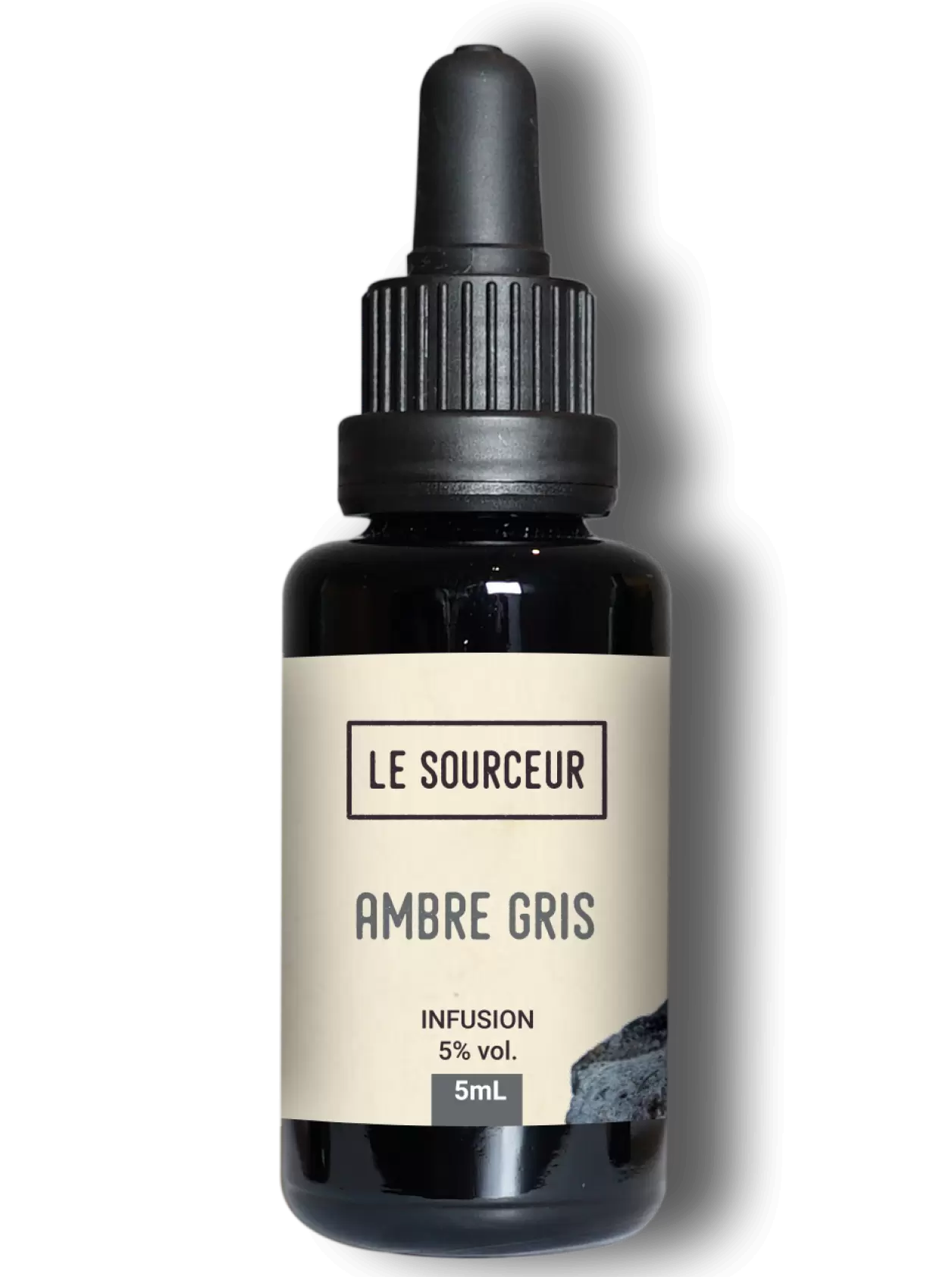Livraison offerte dès 79€ d'achat !
Nouveautés : Les Infusions, les Ultrasons et les Upcycling !
Livraison offerte dès 79€ d'achat !
Nouveautés : Les Infusions, les Ultrasons et les Upcycling !
Ambergris is a UFO among sourced materials. Firstly, because it is one of only 6 animal-derived materials used in perfumery (along with civet, musk, beeswax, castoreum and hyraceum). Secondly, because it is an intestinal concretion of a giant of the seas: the sperm whale or Physeter macrocephalus. A rare and invaluable substance, since we estimated that only 1% of the sperm whale population produces it.
As part of their defense mechanism, they reject any foreign body harmful to their organism, such as cuttlefish beaks, which lodge in their intestines. In order to protect themselves, cetaceans produce an agglomerate that they discharge back into the sea. This is commonly referred to as “sperm whale vomit”, from which ambergris derives its nickname. This animal material is very difficult to identify, and knowing where to find it requires a perfect knowledge of the winds and tides, as well as a developed sense of smell.

It’s a highly fragrant substance, solid, oily and flammable. If it’s commonly referred to as sperm whale vomit, it’s because specialists believe that ambergris is the animal’s puke. But some scientists have recently cast doubt on this theory, and believe that it comes from the animal’s excrement.
Originally viscous and liquid, the mass fossilizes over time, aided by the combined action of sun and sea. As a result, although amber residues can be found in all oceans, it’s almost impossible to find it in its liquid form. So the vast majority of amber is harvested on the coasts, in the form of a block that resembles a simple pebble. So you’ll need a perfect knowledge of currents and tides, the movements of cetaceans, a good nose and a bit of luck if you hope to find any of it.

Each block is unique in its kind, as much for its size, color and composition as for the smell it gives off. It can be round or irregular, detached in the form of what we call “kidney” or complete, weighing from a few grams to several hundred kilos, and above all having very different colors depending on its ripening.
Ambergris is commonly classified into 3 color types: black, gray and white. Black is the freshest, closest to the animal’s own fecal notes. It is therefore softer than the others. White amber, on the other hand, is the hardest, and tends towards more saline and iodized notes. The contribution of the sea is easily recognized on this block. Finally, be careful not to confuse ambergris with vegetable amber, which is a fossilized tree resin.

Who hasn’t dreamed of one day finding ambergris on the beaches they frequent?
With vomit selling for between 20,000 and 30,000 euros per kilo on today’s market, it’s enough to turn a few heads.
There are countless stories in the media about Monsieur Toulemonde stumbling across the precious sesame.
Except that these click-bait articles are often misleading.
In reality, it’s very rare that the material found is actually ambergris.
And unless you know the terrain inside out, and have “your ass in a sling”, pardon the expression, you’re as likely to find ambergris as you are to hit the Lotto jackpot.
We regularly receive calls or e-mails from people claiming to be in possession of ambergris.
In the vast majority of cases, it’s not the material itself.
These days, it’s easy to confuse the material with the detritus that washes up on beaches, whether of natural origin or not: whether it’s solidified animal fat, kerosene or oil.
Every time we’re asked, we get excited about finding the precious jewel of perfumery.
So we happily take part in this quest, with its many twists and turns, incredible stories and, for many, disappointment.
But in the end, it’s the treasure hunt that counts, and it keeps us on the edge of our seats just as it did on day one.

To conclude on this subject, it’s essential to point out that while this is an animal note, under no circumstances is the sperm whale itself disturbed, stimulated or, worse still, killed.
The idea is to harvest the solid mass directly from the continental coasts.
Although this was not necessarily the case in the past, particularly in the 20th century when the species was partly massacred, sperm whale hunting has been almost universally banned since 1982.
It’s worth noting that it was the spermaceti of the animal that was sought after first and foremost, but these hunters also took the opportunity to open its stomach in search of amber.
Even if they rarely found any.
It’s worth pointing out that this amber was not of the same interest, since it’s only after a long process of transformation due to the combined action of the elements that the material takes on its full meaning.
The only other materials of animal origin that do not require a nephastic action for the species are beeswax and hyraceum (African stone).
All other materials have been excluded from perfumery in Europe, either because the animal had to be killed, or because it had to be excited.
This is the case for castoreum, civet and Tonkin musk, for example.
There are countless stories in the media of Monsieur Toulemonde stumbling across the precious sesame.
Except that these click-bait articles are often misleading.
In reality, it’s very rare that the material found is actually ambergris.
And unless you know the terrain inside out, and have “your ass in a sling”, pardon the expression, you’re as likely to find ambergris as you are to hit the Lotto jackpot.

Ambergris is a complex fragrance that intensifies with age.
Freshly harvested, the block gives off scents that are predominantly of horse manure or dung.
Over time, it becomes more refined, releasing rounder, more fragrant notes, rather like tobacco (although its animal character remains perfectly identifiable).
Finally, an old piece that has drifted for a long time in the ocean has a very pronounced iodized odor.
A single material for multiple facets, then, a real boon for perfumers who compose their creations using these singular notes.
Despite these differences, the scent of ambergris has one guiding principle: warm notes.
Long before ambergris became a leading material in perfumery, it was recognized and used by the greatest civilizations.
In traditional Chinese medicine, for example, it is reputed to treat respiratory illnesses.
It has been used to treat asthma for over 2,000 years.
For the record, the origin of ambergris has remained a mystery for centuries.
There were many theories: some considered it to be a resin, a variety of fungus, or even solidified foam; others saw it as a fruit, a precious stone and many others.
In China, it was attributed a mystical origin from which it derived its name, “dragon’s slime”.
As an aside, ambergris has also been widely used for its aphrodisiac properties; as a pheromone, it acts on the hormonal system.
This is particularly true of the Arab world, and the Middle East in particular.
It is said that ambergris was mixed with hot chocolate in European libertine circles in the 18th century.
A drink symbolizing eroticism, even consumed by Marie-Antoinette herself.
Finally, it’s worth noting that the Egyptians ground ambergris into powder for use as incense.

Whales online: what is ambergris
Sylvaine Delacourte: ambergris as a raw material for perfume
Ambergris: identifying ambergris
Olfastory: ambergris
Les Hardis: the erotic secrets of ambergris chocolate
Géo: Why is whale vomit worth its weight in gold?
copyright Photo Léo Massé
Un Parfum de Florès / Documentary series “Sur la Piste des senteurs” / Production: Jangal Films


 informations
informations  mon compte
mon compte  contact
contact Copyright © 2024 Le Sourceur. Tous droits réservés / Développement : Mrlsagency